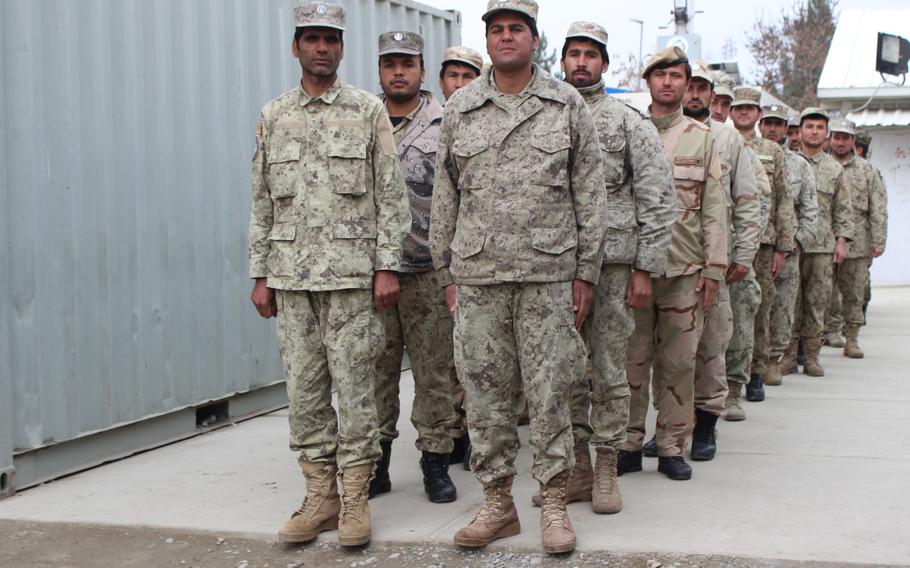
Members of the Afghan National Police prepare for their graduation from the Explosive Ordnance Disposal course at Central Training Center-Kabul, Feb.10, 2016. The Special Inspector for Afghan Reconstruction, in its quarterly report to Congress, questioned whether the U.S. will be able to maintain proper oversight of reconstruction efforts as the drawdown of its troops continues. (Charity Edgar/U.S. Navy)
KABUL, Afghanistan — Current plans to reduce the number of U.S. troops in Afghanistan will leave Afghan forces with “capability gaps” in a number of areas, which could threaten the success of reconstruction efforts in the country, a government watchdog said Friday.
Since 2001, the United States and its allies have been working to strengthen Afghanistan’s army and police forces to be able to single-handedly defend the country, but a number of major challenges continue to hinder those efforts, and further troop withdraw would likely exacerbate the situation, according to the Special Inspector General for Afghanistan Reconstruction’s quarterly report to Congress.
“The U.S. ability to influence operational outcomes on the ground is constricting, while (that of the Afghan National Defense and Security Forces) has not correspondingly risen,” the report said.
One major challenge is that the U.S. has lost much of its ability to directly observe the capabilities and effectiveness of Afghan forces since troop reductions last year. Uncertainty over Afghan troop numbers is also a concern, as is the Afghans’ ability to properly manage U.S. financial aid to support the military and police, SIGAR said.
The U.S. is currently scheduled to draw down its 9,800 troops in Afghanistan to about 5,500 by the start of next year. This reduction, SIGAR said, could result in “gaps in air support, signals, intelligence and other areas.”
In light of the challenges, it said the long-term stability of Afghan forces remains uncertain.
“Without the ability to call on U.S. and coalition military components for help … without the strong monitoring and mentoring arm of U.S. and coalition troops, it is increasingly questionable whether the ANDSF will develop into a robust and sustainable force,” the report said.
The new head of U.S. forces in Afghanistan, Gen. John Nicholson, is conducting a review of the security situation in Afghanistan, which could affect Washington’s troop withdrawal plans. His assessment is expected to be ready at the end of May.
In addition to international troop numbers, funding is also a concern.
According to SIGAR, maintaining Afghanistan’s security forces costs about $5 billion a year, with roughly 80 percent of the amount coming from the United States. SIGAR’s analysis shows that even with this level of funding, Afghan forces are unable to sustain themselves in many areas.
Nicholson’s predecessor, Gen. John Campbell, recommend continuing that funding until at least 2020.
“With the Afghan economy under great stress facing years of low growth Afghanistan’s difficulty in contributing significantly to its security costs will persist,” the watchdog said.
The United States and its allies will meet in Warsaw this summer to discuss how to share the burden of financing the costs of Afghan forces.
SIGAR said providing effective security is “essential for the survival of the Afghan state — and for the success of the reconstruction effort. Neither can deliver lasting gains without the other.”
wellman.phillip@stripes.com Twitter: @PhillipWellman